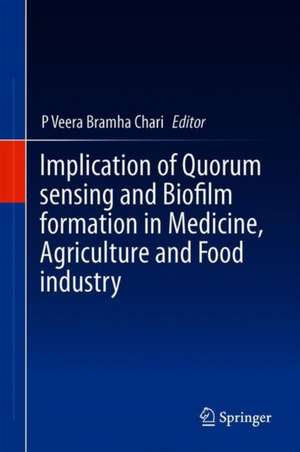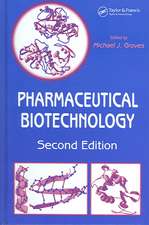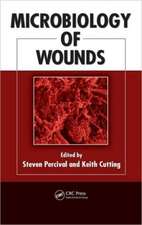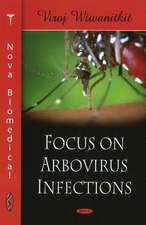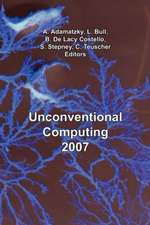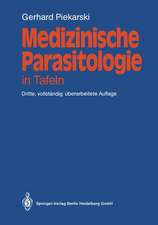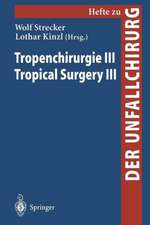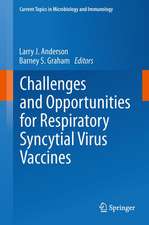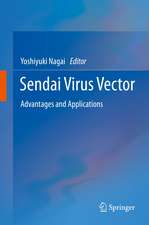Implication of Quorum Sensing and Biofilm Formation in Medicine, Agriculture and Food Industry
Editat de Pallaval Veera Bramhacharien Limba Engleză Hardback – 6 dec 2019
This book also describes the role of quorum sensing in survival behavior and antibiotic resistance in bacteria. Further, it reviews the major role played by quorum sensing in food spoilage, biofilm formation, and food-related pathogenesis. It also explores the methods for the detection and quantification of quorum sensing signals. It also presents antimicrobial and anti-quorum sensing activities of medicinal plants. Finally, the book elucidates a comprehensive yet representative description of basic and applied aspects of quorum sensing inhibitors.
This book serves an ideal guide for researchers to understand the implications of quorum sensing in the foodindustry, medicine, and agriculture.
| Toate formatele și edițiile | Preț | Express |
|---|---|---|
| Paperback (1) | 668.61 lei 38-44 zile | |
| Springer Nature Singapore – 29 dec 2020 | 668.61 lei 38-44 zile | |
| Hardback (1) | 683.32 lei 38-44 zile | |
| Springer Nature Singapore – 6 dec 2019 | 683.32 lei 38-44 zile |
Preț: 683.32 lei
Preț vechi: 719.28 lei
-5% Nou
Puncte Express: 1025
Preț estimativ în valută:
130.76€ • 136.86$ • 108.83£
130.76€ • 136.86$ • 108.83£
Carte tipărită la comandă
Livrare economică 26 martie-01 aprilie
Preluare comenzi: 021 569.72.76
Specificații
ISBN-13: 9789813294080
ISBN-10: 9813294086
Pagini: 321
Ilustrații: XXV, 321 p. 61 illus., 21 illus. in color.
Dimensiuni: 155 x 235 mm
Ediția:1st ed. 2019
Editura: Springer Nature Singapore
Colecția Springer
Locul publicării:Singapore, Singapore
ISBN-10: 9813294086
Pagini: 321
Ilustrații: XXV, 321 p. 61 illus., 21 illus. in color.
Dimensiuni: 155 x 235 mm
Ediția:1st ed. 2019
Editura: Springer Nature Singapore
Colecția Springer
Locul publicării:Singapore, Singapore
Cuprins
Part 1. Role of Quorum sensing in Prokaryotes and Eukaryotes.- Chapter 1. Novel insights on the functional aspects of Quorum sensing systems and its applications in Medicine, Food industry and Agriculture.- Chapter 2. Quorum Sensing Controlled Gene Expression Systems In Gram-Positive And Gram-Negative Bacteria.- Chapter 3. Bacterial quorum sensing: biofilm formation, survival behavior and antibiotic resistance.- Chapter 4. Modulation of Bacterial Quorum Sensing by Eukaryotes.- Chapter 5. Cell to Communication between Mammalian Host and Microbial Quorum Sensing orchestrates the complex relationships.- Chapter 6. In silico approaches for unearthing Bacterial Quorum sensing inhibitors against pathogenic bacteria.- Part 2. Role of Quorum sensing in Medicine.- Chapter 7. Significance of Quorum sensing and biofilm formation in Medicine and Veterinary sciences.- Chapter 8. Quorum Sensing and Multidrug Resistance Mechanism in Helicobacter pylori.- Chapter 9. Candida albicans Biofilm: Risks, Complications and Preventive strategies.- Chapter 10. Quorum-sensing and biofilm formation by oral pathogenic microbes in the dental plaques: Implication for health and disease.- Chapter 11. Biofilm Formation on Ophthalmic device related infections: Insights on Clinical Implications.- Part 3. Biofilm Formation on Ophthalmic device related infections: Insights on Clinical Implications.- Chapter 12. Quorum sensing: Communication complexity for resilience of plant microbe interaction.- Chapter 13. Role of medicinal plants and endophytic bacteria of medicinal plants in inhibition of biofilm formation: interference in quorum sensing.- Chapter 14. Antimicrobial and Anti-quorum Sensing Activities of Medicinal Plants.- Part 4. Role of Quorum sensing in Food Industry.- Chapter 15.- Bacterial Quorum Sensing in Food Microbiology Perspective.- Chapter 16. Methods for the Detection and Quantification of Quorum Sensing Signals in Food Spoilage.- Chapter 17. Novel perspectives on the Quorum Sensing Inhibitors (QSIs)/Quorum Quenchers (QQs) in Food preservation and Spoilage.- Chapter 18. Implications of Quorum Sensing and Quorum Quenching in aquaculture health management.- Chapter 19. Strategies for disruption of biofilm formation ability and intricate Quorum sensing networks in aquaculture Vibrio pathogens.
Notă biografică
Dr. Pallaval Veera Bramhachari is currently Head of the Department of Biotechnology at Krishna University, India. He has served as a Postdoctoral Research Scientist at the Bacterial Pathogenesis Laboratory, Queensland Institute of Medical Research (QIMR), Australia, and DBT Postdoctoral Fellow at the Department of Microbiology and Cell Biology, Indian Institute of Science (IIsc), Bangalore. He holds a Ph.D. in Microbiology from Goa University, India. His major research focuses on applied microbiology and cell biology research, including biochemical mechanism of bacterial-biofilm formations, structure-function relationship of bacterial rhamnolipids, and basic and translational cancer research. He has published more than 115 research articles in leading peer-reviewed international journals and 3 international books and has presented 47 abstracts at various national and international conferences. He has served as an editorial board member and reviewer for a number of national and international journals. He is a member of several international scientific societies and organizations, most importantly, Indian Science Congress & Society of Biological Chemists, India. He has received a number of various prestigious awards, notably, AP State Best Scientist Award 2017, DST SERB Young Scientist Award (2011) and nominated as an Associate Fellow of Andhra Pradesh Academy of Sciences (APAS) for the year 2016.
Textul de pe ultima copertă
The book illustrates the role of quorum sensing in the food industry, agriculture, veterinary sciences, and medicine. It highlights the importance of quorum sensing in regulating diverse cellular functions in microbes, including virulence, pathogenesis, controlled-gene expression systems, and antibiotic resistance.
This book also describes the role of quorum sensing in survival behavior and antibiotic resistance in bacteria. Further, it reviews the major role played by quorum sensing in food spoilage, biofilm formation, and food-related pathogenesis. It also explores the methods for the detection and quantification of quorum sensing signals. It also presents antimicrobial and anti-quorum sensing activities of medicinal plants. Finally, the book elucidates a comprehensive yet representative description of basic and applied aspects of quorum sensing inhibitors.
This book serves an ideal guide for researchers to understand the implications of quorum sensing in the food industry, medicine, and agriculture.
This book serves an ideal guide for researchers to understand the implications of quorum sensing in the food industry, medicine, and agriculture.
Caracteristici
Comprehensively reviews the implication of quorum sensing in medicine, agriculture, and food industry Discusses the role of quorum sensing in the regulation of gene expression, biofilm formation, and antibiotic resistance Introduces the antimicrobial and anti-quorum sensing activities of medicinal plants Covers methods for detection and quantification of quorum sensing signals in food spoilage
